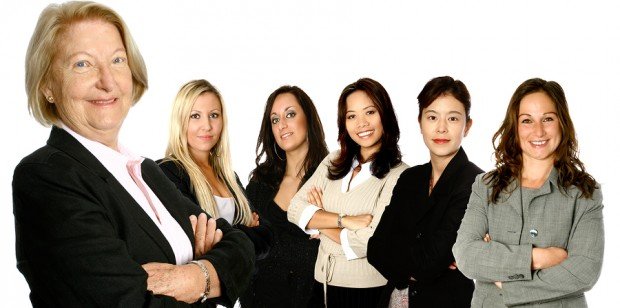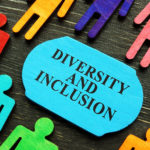Exponential increase in technological advances. Escalating impact of climate change. Extreme political polarization. Three phrases that describe the world we’re living in and the emerging, evolving risks we’re grappling with. All demand bold, innovative advances by our industry if we’re to remain sustainable and relevant.
There’s another area that demands bold and innovative action as well: diversity and inclusion (D&I).
Although D&I has become a part of our current industry vernacular, it’s not a new concept. In one form or another, companies have been working to create a level playing field in the workplace for decades. But recent reports indicate that, rather than making steady progress, we’re actually losing ground in our collective D&I efforts. In the face of our dramatically changing world, this should be cause for concern for all of us.
The absence of an effective, measurable D&I strategy falls squarely into the category of reputational risk. Increasingly, shareholders, investors, regulators and employees are requiring evidence of an authentic commitment to creating inclusive workplaces and governance structures.
Their demands reflect the realities of our world. More than half of the global population is under the age of 30. These young people are diverse and digital. They’re global citizens, and they’re not going to accept a job where they don’t recognize themselves and where they don’t feel welcome. As their careers advance, they’re going to insist that work environments and policies align with their priorities.
We need to pay attention to the fact that there’s not been steady industrywide progress in creating workplaces that reflect the world we live in. A few examples that should serve as red flags:
- The New York Times reported a few weeks ago that the number of women leading Fortune 500 companies declined by 25 percent from last year. And this from a tiny base of 32 women (“The Number of Female Chief Executives Is Falling,” The New York Times, May 23, 2018).
- EY has a Countdown Clock that estimates how long it will be until the world reaches gender parity. When EY launched the clock at Davos in 2015, the estimate was 80 years. Now it’s 216 years. By the way, in the few days I spent preparing these comments, it slipped another year.
- There’s a longitudinal study underway in the U.K. that’s tracking the rate at which women are appointed to the boards of the FTSE350 (Hampton Alexander Review https://ftsewomenleaders.com/). The British government wants representation on every FTSE350 board to be 30 percent female by 2020. The latest report indicates that, in order for companies to meet these targets, almost half of all appointments made in the next two years need to be women (“Nearly half of FTSE 350 Board roles must go to women to meet Government’s 2020 targets“, The Telegraph, June 27, 2018).
You’ve probably seen some of the excuses that men have given for not appointing more women to a board position. Some of them listed in the Hampton-Alexander report that’s tracking the FTSE350 initiative were:
- “I don’t think women fit comfortably into the board environment.”
- “Most women don’t want the hassle or pressure of sitting on a board.”
- “All the ‘good’ women have already been snapped up.”
Why has it been so hard to establish inclusive workplaces?
Well, it’s only recently that we’ve had the data, experience and, most importantly, the insight to really understand what authentic diversity and inclusion looks like.
During the last few years, there’s been a lot of research into D&I initiatives. We’ve been at this for long enough that we have some good information about what works and what doesn’t.
We now have statistically proven data from a global study proving the direct link between diversity—particularly in the C-suite—and the bottom line.
McKinsey launched a report in 2015 that has served as a guide for many companies looking to put a D&I policy in place. Earlier this year, they produced an update to their initial findings.

We know D&I makes good business sense. We know it’s the right thing to do intellectually. But we’re talking about behavior—behavior, which is entirely subjective and which is, more often than we’d like to admit, guided by bias, usually unconscious.
Pina Albo, Hamilton Insurance Group
In their second report, McKinsey expanded their dataset to include over 1,000 companies in 12 countries. There were two main conclusions from this update: Progress has indeed been unexpectedly slow, and there’s irrefutable proof between D&I and a positive impact to the bottom line.
We know D&I makes good business sense. We know it’s the right thing to do intellectually. But we’re talking about behavior—behavior, which is entirely subjective and which is, more often than we’d like to admit, guided by bias, usually unconscious.
That’s another area that we’re much more informed about: unconscious bias. All of us carry imprints from our childhood—how we were raised, what we were taught, where we lived, went to school, worshipped.
As informed as we might be intellectually about diversity and inclusion, we often aren’t aware of how and when we default to those early imprints in making decisions about who to hire and who to promote.
Let me share an anecdote from Hamilton: Our CFO, Jonathan Reiss, was the keynote industry speaker at the Bermuda Captive Conference held in Bermuda in June. The theme of the conference was diversity and inclusion. Jonathan is the executive sponsor of D&I at Hamilton, and one of the things he shared was the effect unconscious bias training had on him when he was a partner at EY.
Jonathan went into the training feeling comfortable in his open and accepting approach to diversity. He left feeling a bit shocked at the bias he carried unconsciously. He said it was a moment of real revelation to him.
I hear that story and I’m full of hope. There are lots of men like Jonathan. Many may have had similar experiences and a desire to overcome these barriers to D&I.
Individually and as an industry, we have a wonderful opportunity to crack this nut together. Women can’t, and shouldn’t, do it by themselves. Neither should men or minority groups.
All the research, all the reports, all the learning indicate we have more than enough will—and now, more than enough learning—to effect meaningful change.
As we tackle the emerging risks of the 21st century, let’s embed our commitment to diverse, inclusive workplaces in every solution. It’s the smart thing to do. It’s the right thing to do.
So, let’s do it.




















 Underwriter, Actuary Fears of AI Drop; Work Needed on Collaboration
Underwriter, Actuary Fears of AI Drop; Work Needed on Collaboration  How Insurers Can Avoid Post-Merger Technology Failure
How Insurers Can Avoid Post-Merger Technology Failure  Slideshow: Carrier Management’s 2025 Top Editor’s Picks (Unlocked)
Slideshow: Carrier Management’s 2025 Top Editor’s Picks (Unlocked)  First Atlantic Hurricane Forecast for 2026 Suggests Season Close to 30-Year Norm
First Atlantic Hurricane Forecast for 2026 Suggests Season Close to 30-Year Norm 







